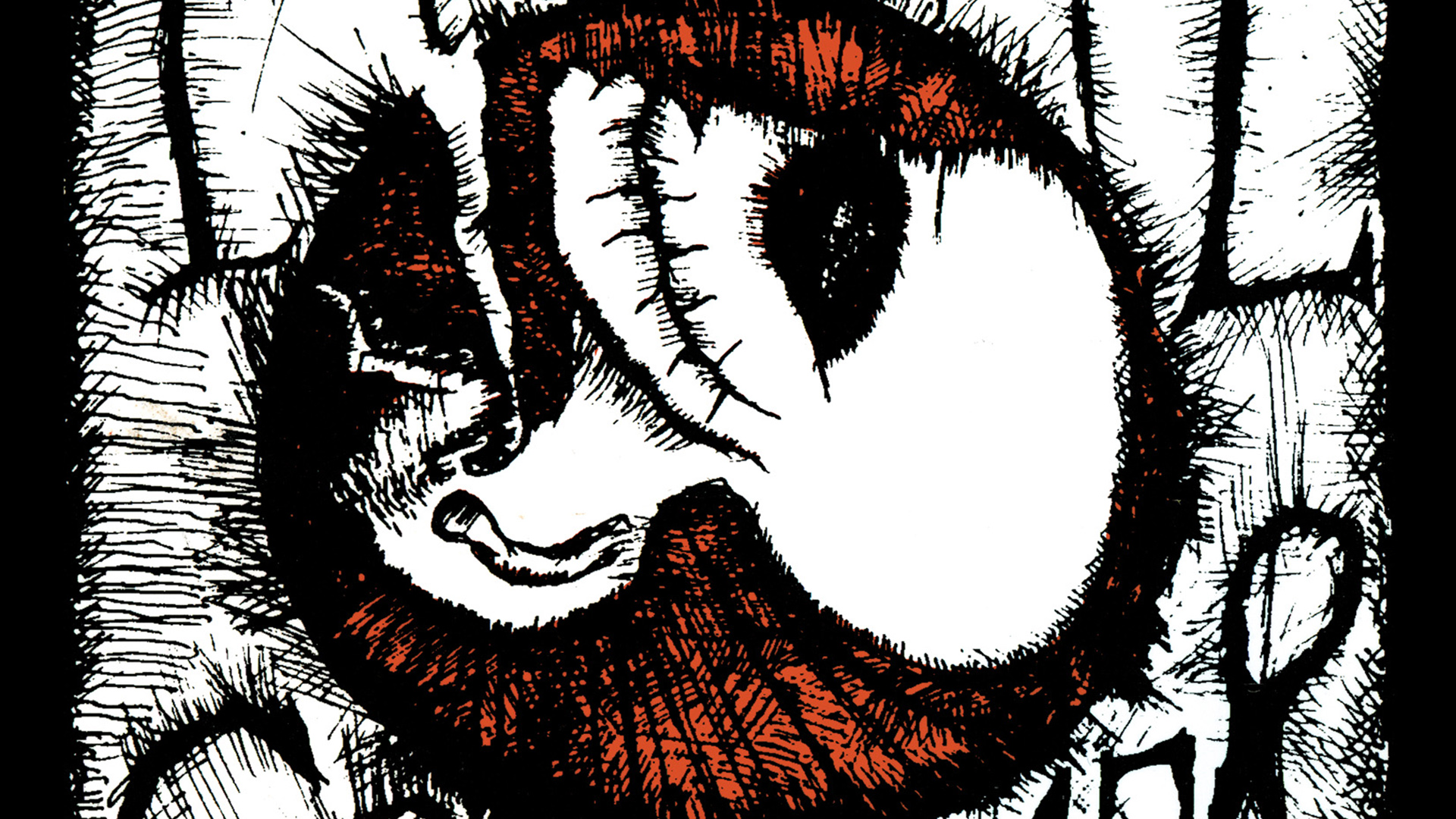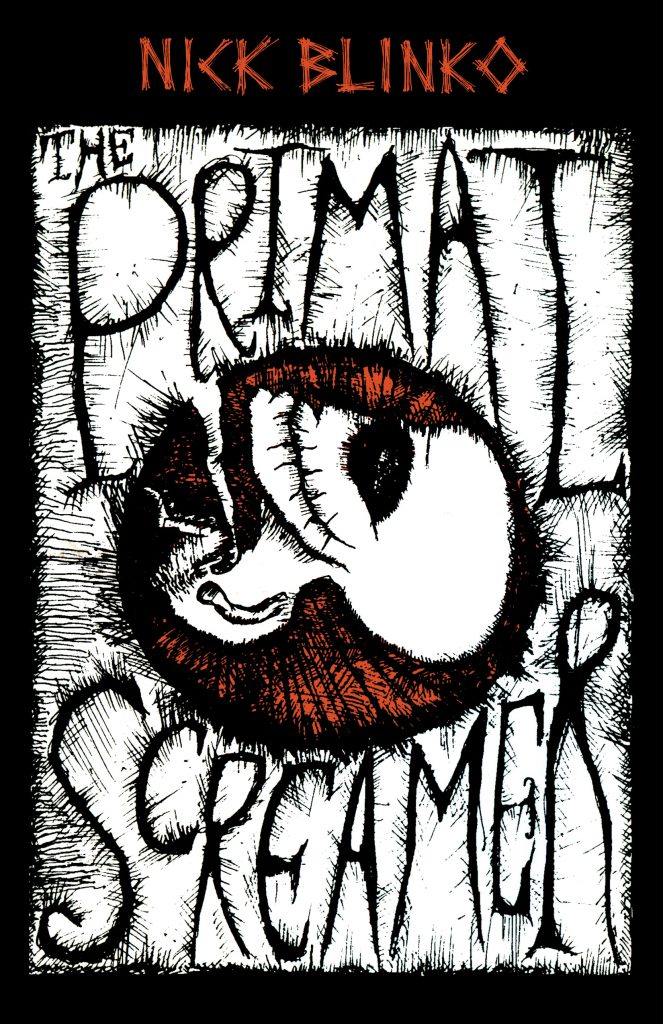By Isaac James Baker
April 1st, 2013
Nathaniel Snoxell is a disturbed young bloke. This 20-year-old first meets Dr. Rodney H. Dweller, a London psychiatrist, after slicing up both of his wrists in a botched suicide attempt that is anything but a “cry for help.” The doctor admits that he’s has never, “seen such grevious self-inflicted injuries as those that lay upon the wrists of Nathaniel Snoxell.”
Nick Blinko’s novel The Primal Screamer is structured as a series of first-person journal entries from this Dr. Dweller, who treats Nat on-and-off from 1979 to 1984. In these journal entries, Dweller tries to understand why Nat suffers from an infatuation with death and a “strong desire for oblivion.” Here are some of the doctor’s early observations of Nat’s mental state:
“Nat’s death wish is both incredibly deep-rooted and close to the surface.”
“What the poor boy has repressed for these last twenty years is inconceivable.”
“At times, though, he feels murderous. Paradoxically, I know he has the wherewithal to kill himself and yet I do not think that he could ever kill another person: he is emphatically one who could not deliberately injure a fly.”
The doctor uses psychotherapy, hypnotherapy and a method he calls “primal therapy” — a kind of deep hypnotherapy designed to uncover trauma stemming back to birth, even earlier. Dr. Dweller barely considers medicating Nat, a choice that seems like it borders on professionally irresponsible considering Nat’s “severe mental distress.” At one point, frustrated yet again by the lack of progress with his client, the doctor laments: “I wish I could give him a pill that would provide the thrill and insight of his love of death, whilst simultaneously freeing him from the threat that it poses to his life. Such a pill, sadly, does not exist, and psychology favours all-pervasive healthy normalcy over morbid unwholesomeness, however visionary it might be.”
A deeply anti-social person, one day Nat picks up the guitar and starts strumming. He soon meets up with a group of anarchist punks who start a band, making music that they view as a means of artistic and socio-political liberation. Dr. Dweller is skeptical of Nat’s growing obsession with this whole “punk” thing: “I had thought [punk music] extinct by now, or at least out of fashion. The punk styles have been transmuted, absorbed and adopted by society, though the polemics — always a minority taste — remain untouched. Nat informed me that ‘punk is not a fashion, it’s an attitude.’ I have heard this somewhere before.”
A classical violinist himself, Dr. Dweller admits that the interaction with other band members and gig attendees could do some good for the reclusive Nat. “Although at the moment he only aspires to long drone-ridden dirges, I believe that his fascination for the instrument will eventually educe much more beneficial effects, most of them probably not musical.”
But even with raucous anarcho-punk as an outlet, Nat cannot defeat his anxiety, depression and morbid fascinations.
The suicide attempts, his constant feelings of dread and despair, the bombardment of dark images, Nat’s struggles feel intensely real, even though they are interpreted through the doctor/narrator. Perhaps Nat’s tortured mental state seems so authentic because it is based on Blinko’s own experiences. Blinko suffers from Schizoactive disorder and has been hospitalized just like Nat. The macabre and obsessive drawings that litter this book seem inexctricably related to Blinko’s own delusions. In order to draw or paint, Blinko sometimes stops taking his therapeutic medication, which allows him access to the deepest and darkest chasms of his mind. It also allows the reader a harrowing and unobstructed view of severe mental distress.
Nick Blinko has a chaotic but ingenious mind. The frontman, lyricist, guitarist and illustrator for the anarcho-punk group Rudimentary Peni, Blinko is no stranger to pushing the limits of artistic expression. I love the way Maximum Rock N Roll describes the author: “Nick Blinko is a madman. That’s not intended as a pejorative opinion but rather a statement of plain fact.” A veteran of what is sometimes called the “outsider art” scene, Blinko’s attacks his canvasses with blank ink pens, scrawling obsessive patterns, distorted faces, broken bodies and all sorts of demonic creatures.
Shocking in their subject matter, Blinko’s drawings are also incredible in their exquisite detail. (Click here to view images of some of Blinko’s work from OutsiderArt.co.uk.) Dozens of Blinko’s sketches (including the scary-awesome cover) are scattered throughout this book. It’s worth buying Primal Screamer for the drawings alone, they’re that fucking good.
This novel is more than just creepy, spooky and punky, it’s deeply philosophical. Primal Screamer focuses on the desire to create art in spite of — or perhaps because of — traumatic and painful experiences. But Nat (and ultimately Blinko himself) don’t view art as some cheesy therapeutic endeavor. Rather, art is about combating nihilism. Even when dealing with disturbing and macabre subject matter, art exists only because of the active participation of the artist. And every act of creation is inherently optimistic. “Creativity,” writes Dr. Dweller, “however pessimistic it appears, is quintessentially optimistic, proven by the fact of its actual existence.”
The book is also an interesting case studying in the shortfalls of the fiction-nonfiction dichotomy. Nat’s band in the book follows Rudimentary Peni’s real-life story. Nat’s mental struggles are Blinko’s. But the end result is a work of “fiction.”
How do we make sense of this? The author of the introduction ponders, “whether, in their search for truth, human beings are capable of anything other than fiction. Doesn’t everything we express, no matter how ‘truthful’ we intend it to be, come out distorted by virtue of having passed through our individual and unique minds?” It’s a very good question, one Blinko spends 122 pages dissecting.
While much of this book is semi-autobiographical, there comes a point near the end when the connection with Blinko’s personal experience is severed. Here, things take an even darker turn. Nat mysteriously disappears. While trying to find him, the doctor falls upon a place so macabre it drives him completely insane. Trust me, I’m not giving away the ending, but suffice it to say H.P. Lovecraft would be proud.
If you’re not sold yet on this story, I don’t know what else to write. So here’s a quick sketch of mine that’s inspired by Blinko’s work.







